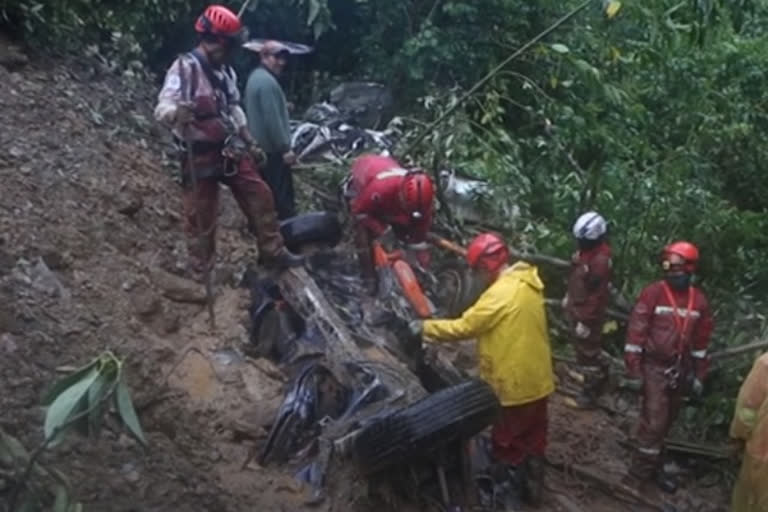"To date, 11 people have died and around 20 have been injured," an official note quoting Defence Minister Javier Zavaleta said, Efe reported.
The statement also indicates that it is believed that there may be more victims of the event and that their rescue will take "a few more days", as it is suspected that some vehicles remain under the mud, without specifying the exact number.
"According to the perception of the authorities, the rescue of possible other bodies and vehicles buried under the tons of earth and mud will take a few more days," the statement added.
Also Read: Turkey-Syria talks underway at 'lower levels': Erdogan
The collapse occurred on Saturday morning when a large block of earth, soaked with water after recent rains collapsed under the road affecting several vehicles in a sector called Puente Armas.
The road connects La Paz with the town of Caranavi some 161 km away and the incident happened in an area with a humid and subtropical climate.

Most of the wounded were evacuated to the town of Coroico, 102 kilometers from La Paz, while others in a more fragile condition were transferred to hospitals in the Bolivian capital, local media reported.
"At least 150 military personnel were dispatched to the area of the landslide to support the rescue work with the police and firemen," says the bulletin.
Also Read: Two killed after plane crashes into California house
"There are several institutions in La Paz and Los Yungas, including Civil Defence and immediate response teams, as well as military personnel from the three forces that are working on the evacuation of families in those municipalities in danger of landslides in the departments of La Paz and Beni," the Ministry of Defence said in the statement.
Minister Zavaleta said the rains affected several municipalities, mainly in the departments of La Paz and the northern region of Beni such as Guanay, Alto Beni, Palos Blancos Coroico, Reyes, San Borja and parts of Trinidad and Riberalta.

According to the Ministry of Defence, the rains are expected to continue during February and parts of March in different regions of Bolivia.



